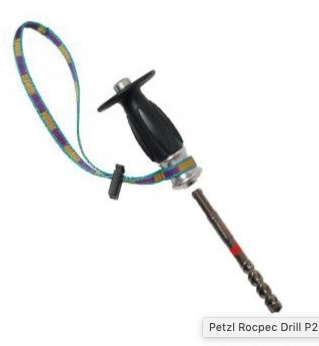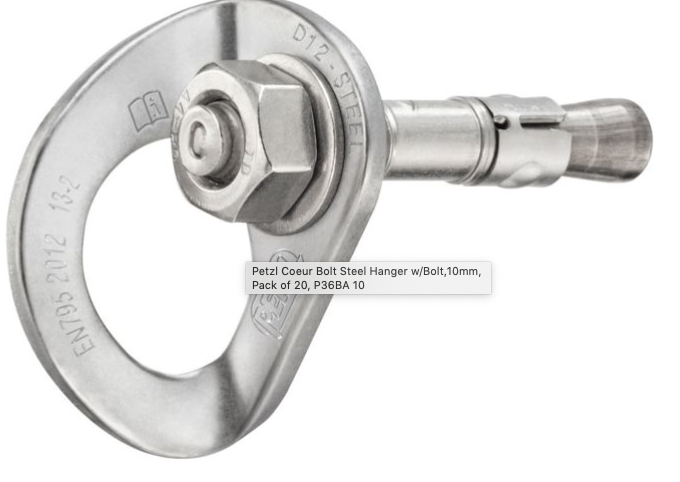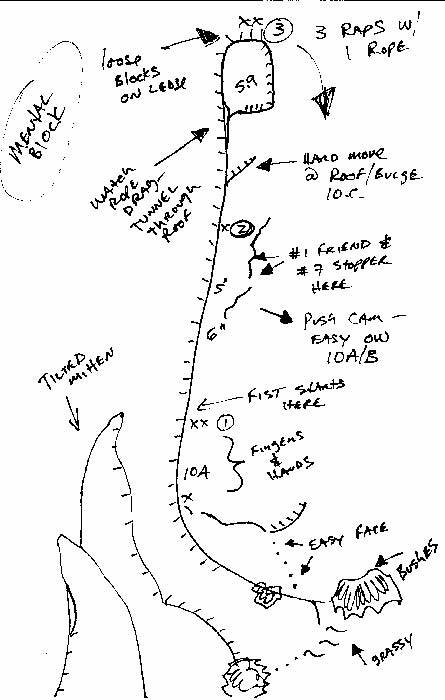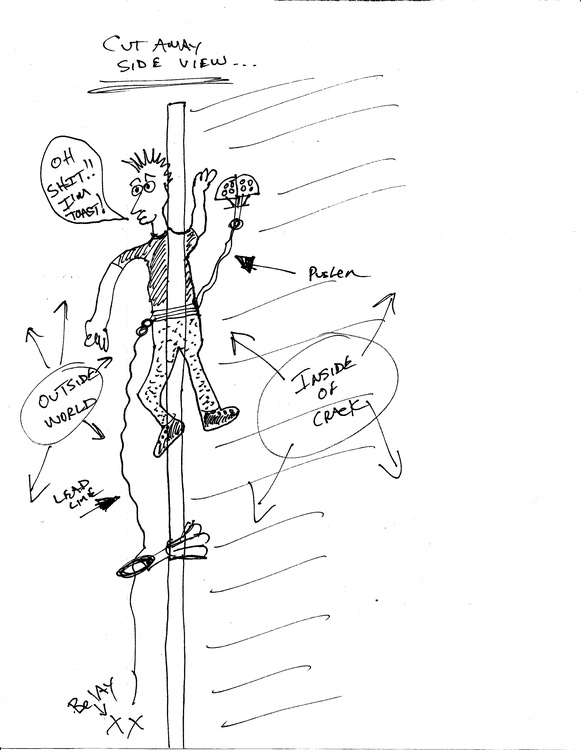Suggested rack for off-widths?
|
|
I'm looking for a suggestions for offwidth gear, mainly with the idea of being able to grovel through a pitch of OW on a Sierra big wall. I don't need to sew it up, and I don't want to do heinous runouts either... I don't know how far apart people place gear in OW climbing, it seems to be less frequent than gear on a hand/ finger crack. |
|
|
There is no standard rack, it is very crack and ability dependent. Usually one can bump the same piece for a while through the crack and occasionally there is other pro available (thin seem in the crack, old bolts, chock-stones, etc.) Look at the routes you are interested in and you'll see what others used. |
|
|
Start climbing low-commitment offwidths with a partner who has gear. Figure out what works for you and start buying individual pieces. For the send on your project, partner with someone who also has offwidth gear so that you can pool your resources. |
|
|
You can bump big cams really well in splitter sandstone (indian creek). In granite it depends. Some times they are splitter, but they can hour glass as well. In this case you would leave one and start bumping another. I would look at specific routes you want to do and read the description of the pitches. Doubles #4-#6 might be worth it if you can afford it. |
|
|
Thanks for the responses. |
|
|
When I used to do this... the basic technique (on granite) was to push a large cam up with you, using a long runner so that the cam could be deep in the crack and out of the way. The trick with this technique was to stop pushing the cam before it didn't fit the crack, either flaring or getting stuck. A cam pushed multiple times results in long runouts from the last piece you left, making it important that the pushed cam can at least hold body weight reliably. This technique may be a bit more fraught on softer rock or incompetent rock where a cam might be dragged out of a crack when weighted, or more terrifyingly, if you've pushed it for a while, left it but take a whipper on the piece from above. As far as the big cam market, BD cams seemed to be a lot less stable then the DMM cams (at least back in the day) and the Valley Giants always seemed to work ok, all this stuff is heavy. Another good technique is to not take all the gear up with you, only the gear you need... of course if you're doing FAs you might not know, but tag lines might work if the climb allows you to haul stuff up without drama. Anyway, you will always need to remember Chuck Pratt: "technique is our protection", and John Long: "DO NOT FLAIL!" Good luck! |
|
|
I don't have a reference for ow in the Sierra's, but I'll echo what others have said. For the creek, having doubles of #4-6 is often sufficient and if you can, slapping a couple of big bros (size 3 and 4) serve as nice intermediates for longer routes. For places like Trout Creek, Squamish and other places with lots of granite, doubles of #4-6 is ample, though not necessary. Lots of bumping occurs and due to the variability in any given ow route throughout the Cascades, there's no big need for a fat rack. Best protection is cramming yourself like a stuffed sausage into that wide boi. |
|
|
Ed and Jenna, thanks for your insight. I am very much a "just climb on the granite and avoid the other stuff" person, so I'd probably be reasonably happy with doubles 4 to 6, and some Big Bros to here and there. Pam Pack mentions the 'scooting the cam ahead' on her website, and that problem with the variability inside of granite OWs. Chuck Pratt... yeah, his technique is maybe a bit beyond what I reached at my peak, I will probably aid anything he'd consider challenging. I like that "do not flail" bit... I learned to climb at the Pinnacles, and on Glacier Point, so keeping the ol' brain under control was something I learned early. Freaking out has always preceded flailing, which has almost always preceded falling. Interesting to hear about the instability (relative) of BD large cams. A friend handed me his Wild Country Tech Friend 5 and 6 just before I led a slippery basalt OW, and I really liked them, so that 's what I bought first. Not sure how they compare to the BD or DMM large cams.
|
|
|
Ed Hartouni wrote: BD cams up to #6 feel plenty stable these days. Placing #7 and #8 on the other hand, feels very different. No matter how you place these, they always feel uncomfortably close to tipped-out. |
|
|
If you have an opportunity to learn from Pam go for it! One thing to keep in mind is she has a very hard-core workout program for herself, so getting in great shape for her class would open the door for even more fun. |
|
|
|
|
|
Ed - I had such a good time in a cyclocross training class in 2018, I'm sure I'd have a blast taking a class from Pam. And you're right, being in top shape (what ever that happens to be, I'm wicked old) would really help in getting the maximum out of a class. Jared G - no, thanks, I drive enough of those at work. Besides that, how do you swing a hammer inside of an offwidth? Seems frustrating. |
|
|
If you're wicked old then I have no idea what the northeast description for me would be... I can't remember my dear old grandmother using anything more extreme! |
|
|
Yo Ed! Good to see you here! Speaking of “wicked old”, I’m concerned I might not make it to the release of your comprehensive Yosemite Valley guidebook! Is there hope? Or… I saw that you recently quoted an author somewhere advocating against guidebooks anywhere in the interest of adventure. Is that a veiled explanation? |
|
|
Hi Kevin! I don't want to turn this thread into a guide book discussion... but I'm hoping you'll enjoy looking through a copy! |
|
|
Industry standard for the Valley was a couple of 4” cams, a 6” cam to push, and a few tubes to leave as you go. Cheap way to get into the wide safely. |
|
|
|
|
|
Kevin - Fair enough, but I think I will stick to the more modern gear, the Big Bros and wide cams. If a bong had any expansion range, I'd be all for it. And yes, I'm aware that bongs have a tremendous expansion range when packed with the right stuff. I never mentioned "hard" offwidth, just being able to continue up a wall route because I have the skills & gear to not be stymied. I am an aid climber with close to no shame, so if necessary, I'll treat big cams as giant cam hooks and toodle my way upwards. Just more more fun to free climb what I can, and aid what I flat-out can't. Russ - Thanks for the info. The two inch increment, and leaving behind Big Bros seems to be standard. I assume the 4's for pro because they are farther back where the crack narrows a bit? Ed - Hm. How about: "That wicked old Franco hain't done much fuh climbin', but that Ed, now he's the cat's pajamas". Only thing more emphatic that I could come up with. Maybe tabernac, but that's pretty rude, and more something to say after I pitch headlong out of the offwidth, and less used for people than situations. It's starting to sound like having two different sizes of cam to push, maybe a 5 and a 6, and enough gear to leave behind a smattering of pro, will do the job for most offwidth. |
|
|
G De Lany wrote: Big bros are a joke if you are shitting your pants and pumped out... a 5" and a 6" cam will get you a long ways. Some wide stuff you push the big cams and pro with small stuff, like wireds or tiny cams in cracks inside the cracks or on the face. Of course everything depends on all sorts of factors, but if you can push and leave something, anything, as you go, 90% of Valley stuff is in the bag. We never had multiples of big cams back then, but made do with tubes, #11 hexes, or crafty wires, all while pushing or at some point relying on our one big cam. As a quick example, see the photo of the Mental Block topo in the Vally. It scares some people shitless. Note how a small cam and wired are used outside the crack on the quasi crux pitch, while pushing a cam. Here is a bad drawing of how to push a cam without the lead rope being in the way: |
|
|
soooooo much old school makes my heart sing ;-) |
|
|
Mental Block was done by Bridwell and Bard in 1973, 4 years before Friends became available, let alone bigger cams. I was there in Camp 4 when they did it. Pretty sure it was big hexes and bongs with some old school go for it thrown in. Bridwell loved to send No Holds Bard up the dicey leads. |

 Continue with onX Maps
Continue with onX Maps Sign in with Facebook
Sign in with Facebook




























